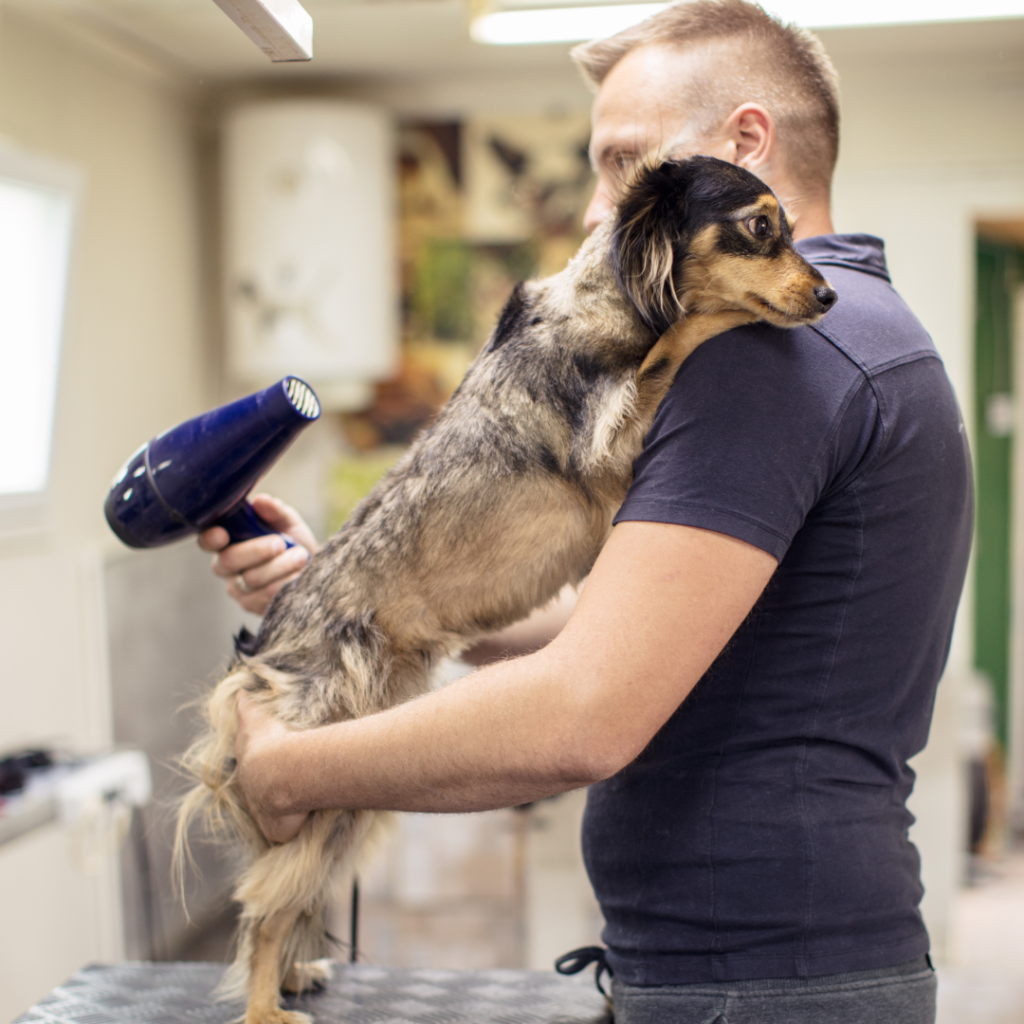What Is Cooperative Care?
Nail trims, ear cleaner, eye drops, grooming… 🥺😬 Is your pet already running for the hills? Do you dread having to do any sort of husbandry procedure on your dog? Do you get more ear cleaner on you than in your dog’s ear? It’s time you read about cooperative care.

Cooperative care or consent based handling is “Training for the day to day procedures and behaviours that are necessary for your dog’s physical health and wellbeing; in a manner that decreases anxiety and increases emotional comfort and trust”. (Deb Jones Ph.D)
If you are starting with a dog who is already fearful of some husbandry procedures, this can take some time and training, but the results are so worthwhile and can help make veterinary care and grooming more comfortable and less stressful for you and your dog.
The Power of Choice
Choice is empowering, reinforcing and helps build confidence and trust. We’re giving the animal control and that is one of the most powerful reinforcers.
Guiding Principles
Your dog has the right to give and withdraw consent. This may mean that they get up and walk away during a procedure, we don’t force them to stay.
Your dog has a true understanding of what will happen when they give consent. Often by adding a predictive cue such as ‘ears’ just before you are going to touch your dog’s ears, gives them a clear understanding of what is coming next.
Pet parents respect their dog’s choices and act accordingly. Try not to ‘trick’ your dog into procedures. They should be willing participants in the care.
This does often require a change of mindset for us.
How To Ask for Consent
I like to introduce a ‘start behaviour’ – such as jump up onto a platform, go onto a station, a chin rest or eye contact. Anything that tells you your dog is ready to begin a procedure.
What Does “No” Look Like?
There are obvious ‘no’ signals such as growling and biting, but also subtle signals such as lip licking, tight mouth, head turns and moving part of their body away such as a paw or their head. Learn to read the more subtle signals to see where your dog is at. Your dog will start to say yes more often if they have a choice and the pressure is removed. If you notice subtle signals, give your dog a break by tossing a treat away for them to get, then wait until they are ready to come back and begin again. If your dog won’t have anything to do with a procedure and will growl/snap, or run away, I suggest you work with a fear free certified trainer so they can help you with the steps involved to build up confidence and trust.
OK, but my dog HAS to have this done 😔
Sometimes, procedures just must be done. It may be an emergency or something your dog needs urgently where you or your vet can’t take the time to allow them the choice. This is where training and preparation comes in, plus any medication that is required to help your pet relax. Once a trust account has been built, withdrawals are allowed, but you can deposit into the account anytime.
Your Team
Ensure your vet takes the time to listen to any concerns or anxiety that you have about your pet’s appointment or procedure. Their time is money so do book an extra appointment if you need. Together with your qualified trainer, discuss your pet’s treatment plan and how to make it as stress free as possible.
More Help
Download your FREE copy of Pawsitive Connection’s Cooperative Care eBook to get started today.
Learn more about Fear Free Certified trainers and groomers.
Learn more about Cooperative Care Certificates
Get in touch with Pawsitive Connection.
